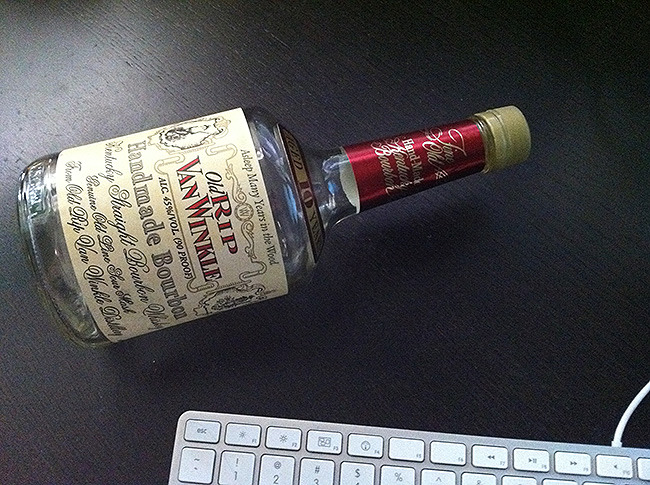Willett Distillery was a bit of a wild card for me. I'd been to or researched every other tour on our trip. All I knew about Willett is that when we first called to see if they were doing tours during the Bourbon Fest, they thought it would be a good idea. They sounded small. I like small places as much as I like big places. The tours are often more personal, more private.
So that's my way of saying that when we pulled up the steep gravel drive we weren't quite sure what to expect. At the top of the driveway we turned a corner and saw a building with a parking lot on one side and an old aging warehouse on the other. Off in the distance there looked to be some more industrial buildings. We stopped in the parking lot, there were chairs on the porch. Peaked my head in a couple doors and decided that this couldn't be where we were supposed to be. So we hopped back into the car and drove down toward those industrial looking buildings. As we got closer, saw a small sign that said gift shop and we spotted a parking lot behind it.
This time we were pretty sure we were where we wanted to be. As we parked and looked around, we were struck by how pretty this place was. We went into the gift shop and paid for our tour. $7 for tour and tasting.
First stop on the tour was to watch a truck unload some grain. It was interesting, but I was distracted by the very interesting arched gold door in front of us. It had very large medieval looking hinges and a handle shaped like a pot still. After the tour guide finishes discussing the history of the property and of the business, we go inside. As we make our way up the black metal and wood stairs, our guide fills us in on a some more background on who the company is and what's going on around us.
Once we get upstairs we are shown the fermentation tanks. There are some filled and some empty. What I am really struck by is the rough hewn stone that is being installed around us. Off in the corner the workmen are still installing some of it. It is beautiful. This is already one heck of place and is just getting more so. After a side trip to see the column still—the little column still which is running a batch as we watch it—we head down stairs to see the pot still.
We are told by our tour guide as we look at the still that we will never see anything like it. She tells us it is patented. Unfortunately she didn't say why and now I'm curious. I tried doing a google patent search but all I found for these guys was a design patent on the pot still shaped bottle they have. Oh well. I'll ask next time.
In between the still house and the closest aging warehouse we make a stop at the barrel filling room. Then it's over to the aging warehouse. This one isn't quite as picturesque on the outside, but the inside is full of aging barrels of whiskey and that's even better. Then its back into the gift shop for the tasting.
I like this tasting. First whiskey we try is the Willett Pot Still Reserve. I found this to be a tasty whiskey. Enough so that I plan to purchase one in the future so that I can spend some more time with it. Then it got really interesting. They gave us the opportunity to taste anything they had. That included the 23 year old rye or some really old bourbon that I can't remember due to being distracted by the rye. I did not try the old rye or the old bourbon. I have no self control, if I tried it, I would have liked it. Then I would have had to fight with myself to not buy it. And it was out of my budget. So instead I tried the five year old rye and ended up buying it with no regrets about what I could have tasted.
I like this tour. It's a beautiful facility, the tour was informative and the tasting was great. I do think they need better signage at the top of the hill to tell you where to go and I wonder at the $7 tour fee but I had fun and want to do it again next time I am in Kentucky.



















